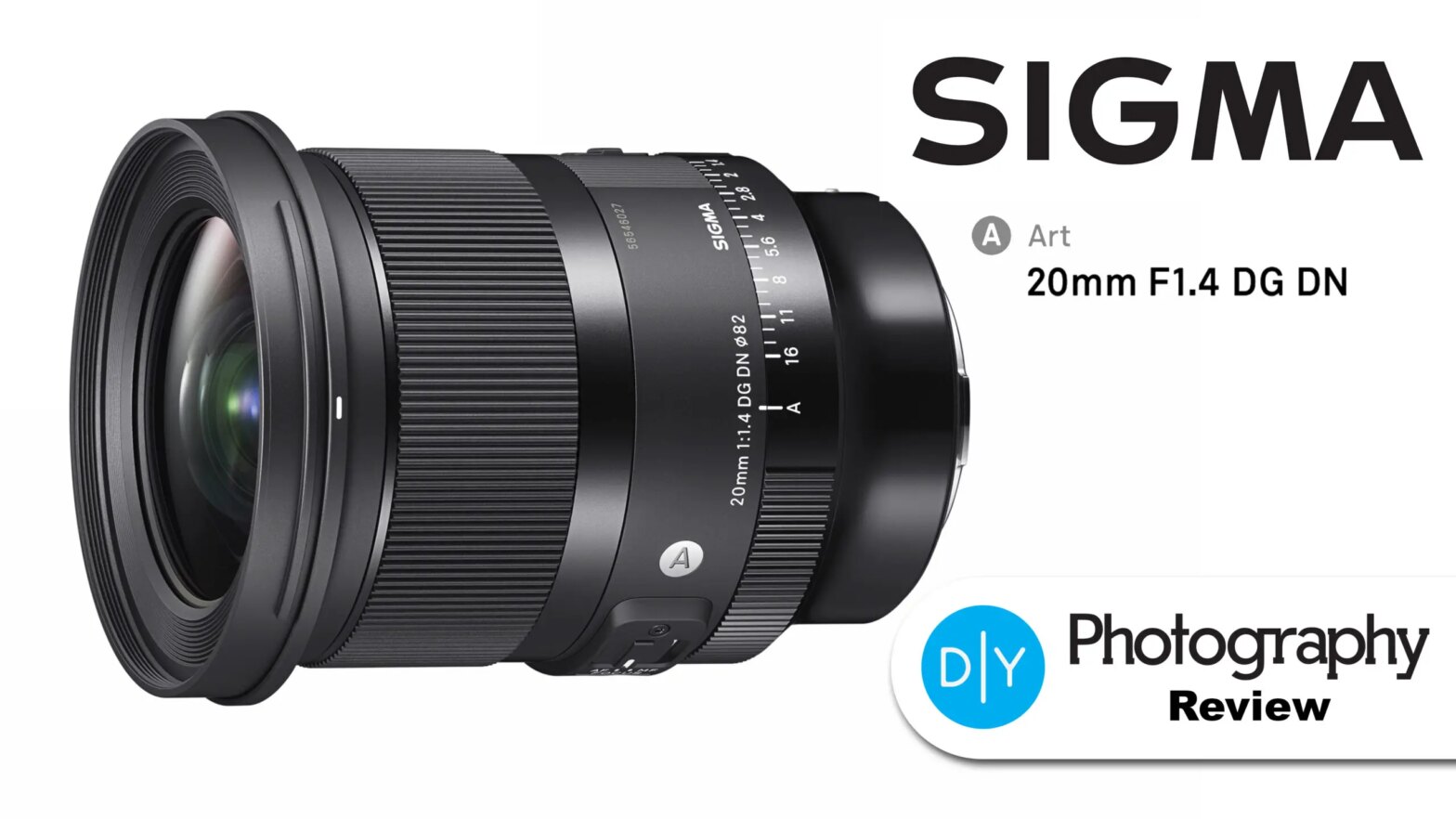[ad_1]
Astrophotography is the answer. The question is, “what does this lens excel at?” I’ve proven it by being able to use it to film the northern lights in real-time, paired with the Sony A7S III. I’ve also tested the L-mount version of this lens with the Sigma FP-L. I have to say that in both instances, I’m sufficiently impressed at base-level, but there’s so much more. This is the Sigma 20mm F/1.4 DG DN Art lens. Let’s dive in.
Sigma have been in the game for over 60 years. Their experience has culminated in the launch of some incredible glass, and this new Art lens in their line-up really packs a powerful punch. This new lens takes everything that Sigma knows about wide, fast lenses and puts it all in one place.

This prime 20mm lens gives a field of view that isn’t unnaturally wide but is wide enough to incorporate enough of a scene to see a lot of features. In real terms, it’s 94.5˚. This perspective makes this lens particularly useful for astrophotography. Especially when we consider the maximum aperture of f/1.4. At the other end of the scale, the minimum aperture is f/16. I’ve found the 11 diaphragm blades create a nice bokeh effect as well as precise movement between aperture values. (Well, as much bokeh you can get with a 20mm lens anyhow).
The 82mm filter size is fairly common and makes it easy to find compatible filters. I have found this to be a problem with the often-uncommon filter size of other ultra-wide lenses. A lens that I’ve often labeled as my ‘go-to’ for astrophotography is the Nikkor 14-24mm f/2.8, but the bulbous face requires specialized filters. Those are not impossible to get, but they do cost. Sigma have avoided this problem altogether by using a common thread size and flat lens front.
By now, I’ve thrown quite a bit of technical info at you and actually refrained from giving my opinion, so it’s time for me to open up about this lens.
It’s amazing! Honestly, this is an Astro dream. I’ve been looking for the ultimate aurora filming lens for years, and this is it. The whole sky opens up to this lens, flooding the sensor with light from the huge aperture. Even with an APS-C sensor, the lens is still 30mm equivalent.
As someone who regularly shoots in cold conditions, one of my main considerations with lenses is the cold. This lens has a lens heater retainer which allows mounting a heater to the lens. The heater prevents the front glass elements from freezing or suffering condensation. The lens is made from thermally stable composite materials, so the whole thing feels very solid and sturdy. I never checked, but I assume the lens does not contract or expand under changing temperatures either. From what I can tell, it’s a beast that would battle even the most demanding conditions.
Optically, I could not detect any geometric distortion or chromatic aberration. There are 17 elements in the lens, so I guess Sigma were pretty generous with glass.
The switches and rings are easy to operate and feel very deliberate in their mechanisms. Speaking of mechanisms, the autofocus is driven by Sigma’s Hyper Sonic Motor, powering through the entire focus range in less than one second and hitting tack-sharp focus every time.
The Sigma 20mm f/1.4 DG DN Art lens is pretty solid. It weighs in at 630g (22.2oz) for the E-mount version. This isn’t exactly small and light, but Sigma have clearly focused on the quality of the optics here. For what it offers, I wouldn’t really call it ‘heavy’. The images are very sharp.
The wide aperture allows for great focusing even in dark conditions, and although it’s largely up to the capabilities of the camera, this lens goes a long way to help. When I used this lens along with the Sony A7S III to film the northern lights it was really hard to miss focus. In fact, I encountered only user error when focussing. The lens and camera got it right. I often find that autofocus motors make a fair amount of noise, but with Sigma 20mm f/1.4 DG DN Art lens it’s hardly noticeable, and it’s fast.
Photographing the night sky and its features is easy with this lens. It certainly isn’t going to pick out a galaxy, but for wide images of the sky it’s ideal. I’ve used it a lot to shoot the northern lights and even confidently included it in the Ultimate Northern Lights Filming Rig article I wrote recently. The key to aurora photography is to get as much light in as possible to retain the details of the motion of the dancing lights. This needs to be balanced against the available light and the sensor noise created by shooting in the dark. The best way to achieve this is with a wide aperture
I’ve put some emphasis on the fact that this lens is ideal for astrophotography, and rightly so, but it’s actually great for a lot for a lot of photographically demanding situations. While the field of view doesn’t exactly make it sound like a great portrait lens, despite the depth of field sounding great, I found that it creates a great visual effect. The lack of distortion helps retain face and body proportions whilst leaving plenty of space for the environment, all in a linear perspective.
My overall impression of this lens is very good. Comparing it to older variants there are certainly improvements and when compared to similar lenses by other manufacturers, this is my choice. It’s sharp, lightweight and robust. My only criticism is that I don’t like having an aperture ring that doesn’t lock in place. It’s easy to knock the aperture away from where it’s set. Aside from that, I can’t fault this lens. Sigma, keep it up.
[ad_2]







